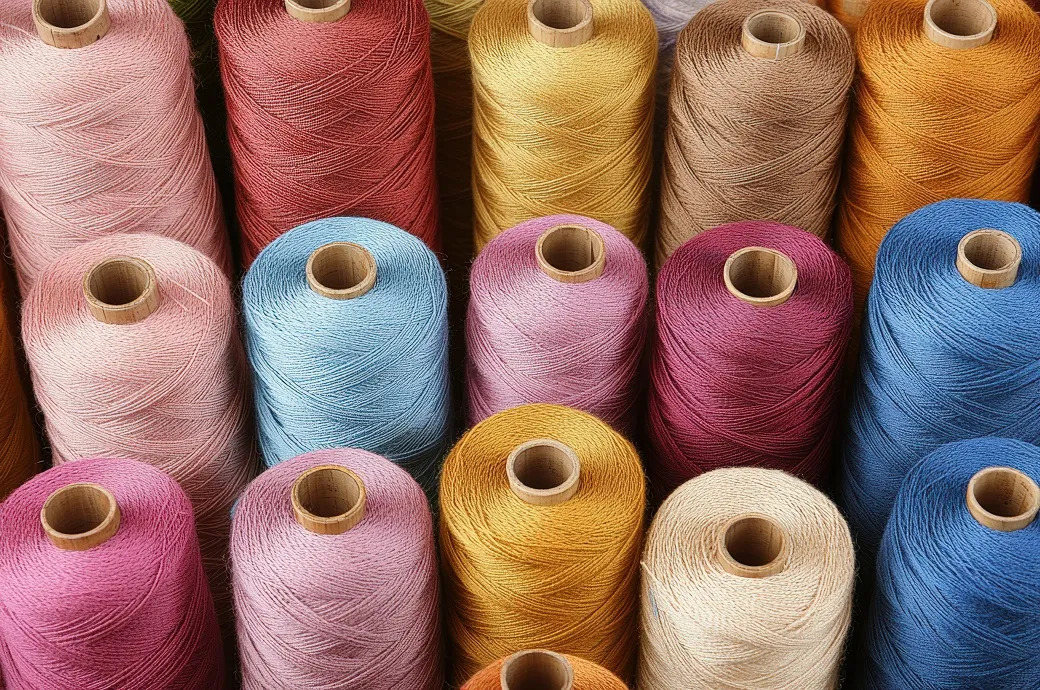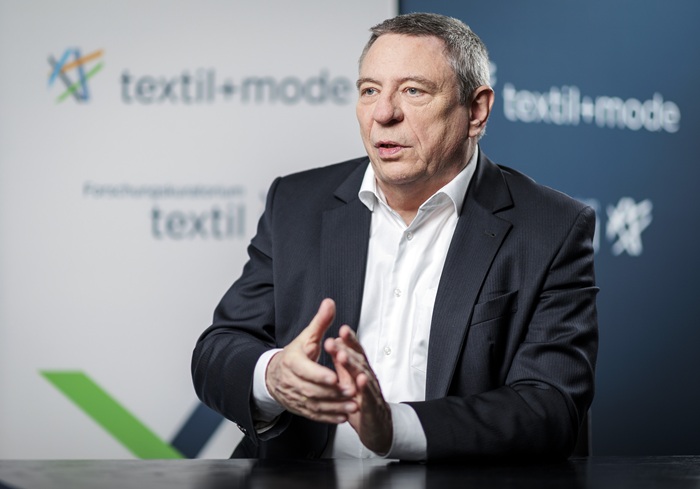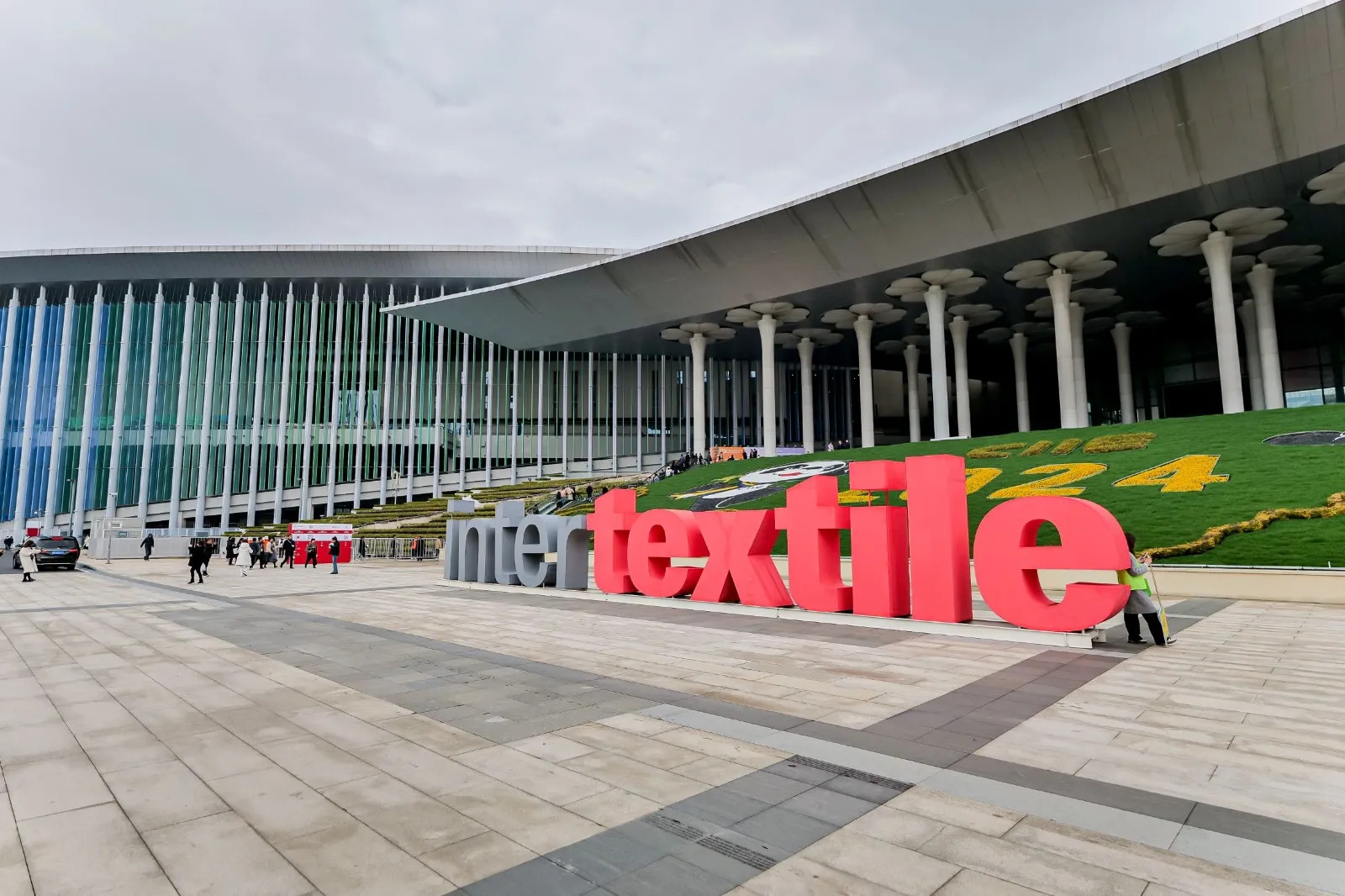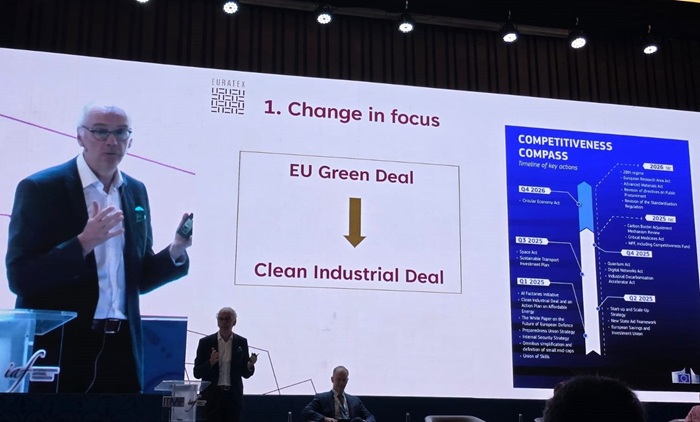FW
"If the Trans-Pacific Partnership (TPP) is discontinued at any given point, it’s Asia which is going to be at the receiving end. Singapore, along with New Zealand and Chile, initiated the Trans-Pacific Strategic Economic Partnership agreement in 2005. Despite its small size, Singapore plays a significant role in the TPP. The benefits of the trade pact are more strategic than economic. By playing a part in shaping the rules of the TPP, Singapore is given an opportunity not often accorded to a small country."
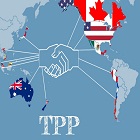
If the Trans-Pacific Partnership (TPP) is discontinued at any given point, it’s Asia which is going to be at the receiving end. Singapore, along with New Zealand and Chile, initiated the Trans-Pacific Strategic Economic Partnership agreement in 2005. Despite its small size, Singapore plays a significant role in the TPP. The benefits of the trade pact are more strategic than economic. By playing a part in shaping the rules of the TPP, Singapore is given an opportunity not often accorded to a small country. Moreover, Singaporean firms can gain important advantages by being the first to adapt to such rules, and they can be of service to firms from other countries by helping them to tap into the vast market TPP creates.
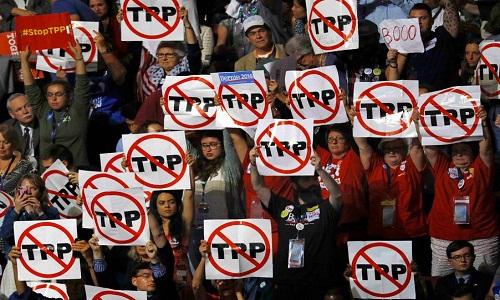
Although the TPP has been discontinued at many places, Singapore is still betting big on TPP. First, Singapore still has an FTA with the US, which has eliminated tariffs on all of Singapore’s exports to the US as of 2014. Singapore also has FTAs with the other three big players (the EU, China and Japan). As the only country in the world with FTAs with all the top four traders, Singapore is in an enviable position. Second, if the TPP does collapse, although Singapore wouldn’t be able to help influence the rule-making process, it can still play an important role in other forums, such as the Regional Comprehensive Economic Partnership (RCEP), the Asia-Pacific Economic Cooperation and the World Trade Organization.
It would be difficult for Singapore to persuade other countries in these forums on any given set of rules owing to the greater membership diversity. However, as their memberships would be more representative, if Singapore were successful in pushing certain rules at these forums they would have a much higher chance of adoption at the global level.
Implications for other ASEAN Economies
While the discontinuity of the TPP won’t impact Singapore in a significant way, the situation is different for countries such as Vietnam and Malaysia. For these two economies, the main benefit of TPP membership was the access to the US market. Without the TPP, these two countries will find it hard to compete with other developing countries exporting similar industrial goods and raw materials. It’s going to be a tough ride for other countries as well. If the TPP were to come into full effect, trade and investment activities in the four ASEAN TPP members (Brunei, Malaysia, Singapore and Vietnam) would intensify, and in turn generate positive spillover effects for other countries in the region. Without the TPP, none of this will work.
IS RCEP the alternative?
Owing to the increased awareness around the Regional Comprehensive Economic Partnership (RCEP), a proposed FTA between the 10 ASEAN states and China, Japan, Korea, India, Australia and New Zealand, TPP will soon become a forgotten phenomenon, believe experts. Having said that, while China is currently ASEAN’s largest trading partner, it is also one of its major competitors due to similarities in export profiles. ASEAN countries used to enjoy a surplus in their bilateral trade with China before the ASEAN-China FTA came into effect. But in 2012, two years after the ASEAN-China FTA came into effect, ASEAN ran into an $8.5 billion trade deficit. This further snowballed to $44.5 billion in 2013, and $63.8 billion in 2014. Adding the other five countries into the mix might not solve the deficit problem for ASEAN as none of them can match China’s manufacturing prowess.
Moreover, based on what is known so far, the RCEP doesn’t look promising in terms of its scope. The tariff concessions for goods seem to be lacking in both breadth and depth; and it is the same for trade in services as well. As for new regulatory areas such as competition, environment and labour issues, it is not likely there will be rules, or at best, just cursory references to them.
Without the external pressure from the TPP, it will be hard for most ASEAN countries to upgrade their trade profile or their regulatory frameworks. While the RCEP might bring short-term gains in the traditional agricultural and manufacturing sectors, ASEAN countries that are interested in upgrading their economies might need to look elsewhere for inspiration.
Textiles Minister Smriti Irani presented the AEPC Export Awards, 2015-16. She encouraged AEPC and garment exporters to be a partner in the government's efforts towards job creation through value-driven manufacturing and exports. The minister presented the awards in 22 categories. The awards were divided into multiple categories and the key awards were given to Shahi Exports, Orient Craft, Gokaldas Exports, (Bangalore).
Winners for Global exports above Rs 100 crore and up to Rs 500 crore were: Pearl Global Industries, Pratibha and Raymond Group of Companies. Award winners for Global exports above Rs 50 crore and upto Rs 100 crore were: Penguin Apparels, Jyoti Apparels and Loyal Textile Mills. Award for the new entrepreneur was bagged by Milion Exports Private and winner for the highest exports to Japan was Lodha Impex.
Speaking on the occasion, the minister said her ministry would do its utmost within the constitutional framework to strengthen the industry. In the wake of demonetization, the Textiles Ministry has helped open 5 lakh bank accounts for associated workers in the industry in a period of three weeks. The Minister said that the government is also ensuring that the workers are trained to digitally use their bank accounts.
She further noted to further promote exports, there should be an award for the best player in emerging market in the next award season. Industry should also head towards sustainable garments from an international perspective; and should look for innovation either in marketing or technology.
Swedish company We are SpinDye has developed a new method that could revolutionize the manufacturing of synthetic fibers and thereby of pants, jackets and backpacks. The new method involves no high use of water and heavy use of chemicals which was part of the dyeing process. It is resource-efficient, sustainable, colorfast, and no bleaching out.
We are SpinDye dyes synthetic fibers is completely different from other textile company, as they are focused on sustainability and environmental protection. Above all, the immense use of water is significantly reduced by innovative procedure. The idea of We are SpinDye is quite simple: recycled plastic is melted down, the desired dye pigment is added to the undyed material. After that, yarn is produced from it in the desired strength. The clients and manufacturers can further process this yarn as usual.
CEO Martin Berling of We are SpinDye says their company is built on the principle of the least possible damage to the environment. They require hardly any water, produce practically any garbage, and the use of chemicals is reduced to a minimum. We are SpinDye is offering its technology for all synthetic materials, such as polyester or nylon, but also for rayon. A combination of synthetic fibers and unbleached wool can be used. There are no limits for manufacturers in further processing: The fabrics can, for example, be coated or equipped with a membrane.
The company isn’t the only one that’s developed a water-free dyeing technology. There are others, for example Nike and Adidas that have procedures with ColorDry or DryDye that don’t require water for the dyeing process – for years now.
India is looking to be self-reliant in raw silk and plans to bring down imports to zero level by 2020. K M Hanumantharayappa, Chairman, Central Silk Board (CSB) says with consistent supply of raw silk of high quality in adequate quantities and increased production of bivoltine silk, India will be able to attain self-sufficiency in silk.
To achieve this objective, CSB has been making concerted efforts and is developing new technologies for quality cocoon production and its conversion into silk yarn of global standards. Currently, the silk production is around 28,000 tons of which 10,000 tons account for crossbreed Mulberry variety.
Hanumantharayappa further said that there is a gap between silk production and demand. Besides shortage of skilled manpower is forcing imports. To bring this to an end, the Central Silk Technological Research Institute (CSTRI) under funding from the board has developed indigenous Automatic Reeling Machine (ARM) and it will be supplied to reelers from next year.
The Board is launching its second Centre of Excellence (CoE) at its headquarters in Bengaluru which is expected to be inaugurated by Union textile minister Smriti Irani. Managed by the CSTRI, the CoE will conduct specialised skill training and advanced short-term and long-term courses in silk reeling, spinning, twisting, weaving, processing, finishing and computer-aided design development and colour matching, besides packaging.
It was a historic day for the Chhindwara centre of the Apparel Training & Design Centre (ATDC) when President of India, Pranab Mukherjee, graced the campus on December 14. The President and other dignitaries, including Madhya Pradesh Governor Om Prakash Kohli were received by Sr.Vice Chairman, ATDC Hari Kapoor, G S Madan, Vice Chairman, ATDC and Darlie Koshy (DG&CEO, ATDC & IAM) at the campus.
The President was given a tour of ‘Mission to Movement’ display by ATDC and detailed demonstration of every work station including cutting machines, computerised sewing machines, the pattern making room etc. at the Centre. Later President Pranab Mukherjee interacted with the Smart Sewing Machine course students and new B Voc courses candidates at the Integrated Campus.
He appreciated the infrastructure and quality of training at ATDC as trainers focus on providing maximum hands-on technical skills through practical approach in simulated factory like training infrastructure of ATDC, supported by factory visits and internships.
The ATDC is committed towards the ‘Skill India Mission’ dedicated to apparel sector and is doing its best to spread technology and skills as the largest vocational training provider for the sector in order to provide skilled professional workforce to the nation to improve productivity and efficiency for long-term competitiveness. The Centre has emerged as the largest vocational training provider for the textile-apparel-chain offering a comprehensive bouquet of courses for career progression in an integrated manner by creating a step ladder – training eco – system with clear focus on skilling of aspirational Indian youth for the rapidly growing export-domestic apparel sectors.
If Bangladesh can create an adequate number of skilled manpower in design and provide all kinds of apparel solutions to retailers, achieving $50 billion in garment exports by 2021 is possible. In fact, the country can go beyond this level also, believes David Hasanat, Chairman and CEO of Viyellatex Group. He shared his views while spresenting the keynote paper at a roundtable on '$50 billion export target and the role of CEBAI'.
The Centre of Excellence for Bangladesh Apparel Industry (CEBAI) was launched in December 2014 to provide training for creating skilled manpower. For starters, Bangladesh must produce an adequate number of designers as the majority of the garment manufacturers mass-produce the designs supplied by retailers.
Currently, less than one per cent of manufacturers provide design support to buyers, he said. Every year more than 20,000 expatriate experts are taking away $5 billion from Bangladesh only because of shortage of skilled and technical manpower in the country. The amount that foreign experts are taking away from Bangladesh every year is bigger than the net profit made by local garment exporters, Hasanat said. Apart from skilled manpower, he suggested addressing the challenges such as occupational safety, power and gas supply, improving port services and transportations, market diversification and political stability. Bangladesh is the second largest exporter of garment items in the world, with a 6 per cent share of the $450 billion global market. China is the number one exporter with a 39 per cent share.
"Despite the demonetization drive, which has affected domestic and export industry sentiment, the Yarn Fabric & Accessories Trade Show; YFA 2016 which held from November 23-26, 2016 in New Delhi, saw visitor numbers going up 15 per cent over previous edition to touch 8,598 buyers. A majority of the 148 exhibitors participating at the show also expressed satisfaction with the numbers as well as quality of the buyers."

Despite the demonetization drive, which has affected domestic and export industry sentiment, the Yarn Fabric & Accessories Trade Show; YFA 2016 which held from November 23-26, 2016 in New Delhi, saw visitor numbers going up 15 per cent over previous edition to touch 8,598 buyers. A majority of the 148 exhibitors participating at the show also expressed satisfaction with the numbers as well as quality of the buyers.
As against around 100 exhibitors in 2015, there were 148 participating companies at YFA 2016. The highlights of the exhibition were fashion shows held throughout the day on all the days as well as in the evening. There was also a Chinese pavilion, in which 36 Chinese exhibitors showcased innovative yarns, fabrics and garment accessories.
Who’s who make their presence

The exhibitor list included the who’s who of Indian and global textile industry across the textile value chain from fibres to garment accessories, including the likes of Indo Rama Synthetics, Bhilosa Industries, Vardhman Textiles, and many others. Some companies exhibited and a few launched innovative and latest developments in value-added textile products like speciality fibres, multifunctional yarns, mélange yarns, spandex yarn, embroidery yarn, bamboo fabrics, modal fabrics and several unique garment accessories.
Among the visitors, were sourcing heads, purchase managers, head merchandisers, country managers etc. YFA Trade Show 2016 New Delhi also saw buying houses for H&M, Gap, Triburg, Decathlon, Marubeni India, Impulse, ITOCHU India, Alliance, TQM Global Buying, NEXT Sourcing, JC Penney, and many more.
Speaking about his experience, Maheshwari, Director, Nimbark Fashions, said, “Despite the currency crisis, we have had genuine as well as decision makers visiting our booth. We were able to make new contacts.” Pinkesh Jain, CMD, Everflow Petrofils, added, “We are satisfied with our participation at the YFA 2016 show. We have seen a steady stream of buyers visiting our stall, not just from Delhi or North India, but also other parts of India, which includes, buying houses, exporters, domestic brands, etc.”
“We met many new as well as existing buyers. It was satisfying to revive relations with buyers who used to purchase from our mills earlier,” said Pankaj Bhardwaj, AVP (Yarn Marketing) at Nahar Industrial Enterprises. “We had a good number of buyers at our stall and met many buyers from buying houses, exporters, etc and also from foreign countries,” said Tina Zhang, Hubei Jinghua Group from China.
Insightful conference
A textile conference in association with TIT-Bhiwani and the Textile Association of India (TAI) Delhi was also arranged on the sidelines on Day-1. The first panel discussion was on ‘Growth & Prospects of Handloom Industry,’ and the second panel discussion was on ‘Make in India – Innovation in Textiles’. This was followed by a presentation by Prof Rajendrakumar Anayath, Director, TIT Bhiwani on ‘Beyond Engineering: Emergent Materials & the next Interface’. ‘Titoba’, an alumnus meet, with a gathering of more than 400 top industry professionals, in association with TIT Bhiwani and again the Textile Association of India (TAI) Delhi was also organized.
India has close to 2.3 million handlooms with major centers in Andhra Pradesh, West Bengal and Madhya Pradesh. The handloom industry in India is among the largest in the world. Almost 90 per cent of the world’s handlooms come from India. This industry employs close to ten million artisans in India and is considered the second largest income generating activity after agriculture in rural India.
A weaver can produce fabrics worth at least Rs 30,000 to Rs 50,000 a month. The cost of material is usually 10 to 15 per cent; this gives a handsome return on investment in only about two to three months. The handloom sector employs 10 million artisans and can employ more. It can enable reverse migration possibilities, from urban to rural, and reduce stress on urban infrastructure.
There are multiple tech disruption possibilities here. Handloom has the opportunity to create a cab aggregator type of business model, which enables matching of disaggregated demand and supply. There is disaggregated supply (2.3 million handlooms scattered across India) and disaggregated demand (rural, urban and international).
Handloom is well suited to rural India where there are power problems as it does not depend on electricity. Power looms can’t give hand woven custom-made designs. Handlooms can.
With the number of orders receding despite the marriage season, weavers in the silk city Berhampur in Odisha are feeling the heat of demonetization as cooperatives are unable to pay these artisans, apparently due to cap on the withdrawal limit. Sale of Berhampuri pattas have come down 60 per cent while cooperative societies are struggling to pay weavers their wages due to the cash crunch, says T Gopi, President, All Odisha Devanga Mahasangh.
There is a huge demand for ‘Berhampuri pattas’, famous for its ‘phoda kumbha’ and ‘patta’ and ‘joda’ (for men). These are mostly sold through cooperative societies like’Boyanika’. The annual sales turnover of the ‘patta’ is around Rs 2.50 crore to Rs 3 crore.
The Berhampur Cotton and Silk Cooperative Society is also facing problems in paying weavers. While earlier they used to take payment in cash at the time of delivery, now they are reluctant to take cheques. The cooperatives have asked weavers to open accounts in which the money would be transferred. Over a long period of time, ‘sari’ woven from Berhampuri silk, has been exported to Southeast Asian countries. The sari and joda have got the geographical indication (GI) tag from the Centre.
To enhance Pakistan's export competitiveness and institutional strengthening under the Strategic Trade Policy Framework (STPF) 2015-18, the federal government would spend Rs 20 billion in the next three years. In response to emerging international changes, several other initiatives are being implemented to enhance the export basket and market share. The total volume of Pakistan's exports that was $24.5 billion in 2013 fell to $20.8 billion in 2016.
Among the steps taken by the government to enhance exports are: sales tax zero-rating regime for five export oriented sectors comprising textile, leather, carpets, surgical and sports goods has been introduced from July this year. The other steps were establishment of Export Promotion Council for Pharmaceuticals & Cosmetics, and Rice Export Promotion Council, support for import of plant & machinery to strengthen supply chain and encourage value addition and performance based incentive (PBI) to offset burden of higher utility costs and local levies and taxes on export sectors.
Under short-term export enhancement measures, four product categories comprising basmati rice, horticulture, meat and meat products and jewellery were aimed at with parallel focus on markets including Iran, Afghanistan, China and European Union. An additional Rs 6 billion was available this fiscal year to exporters through Textile Policy. 2014.


